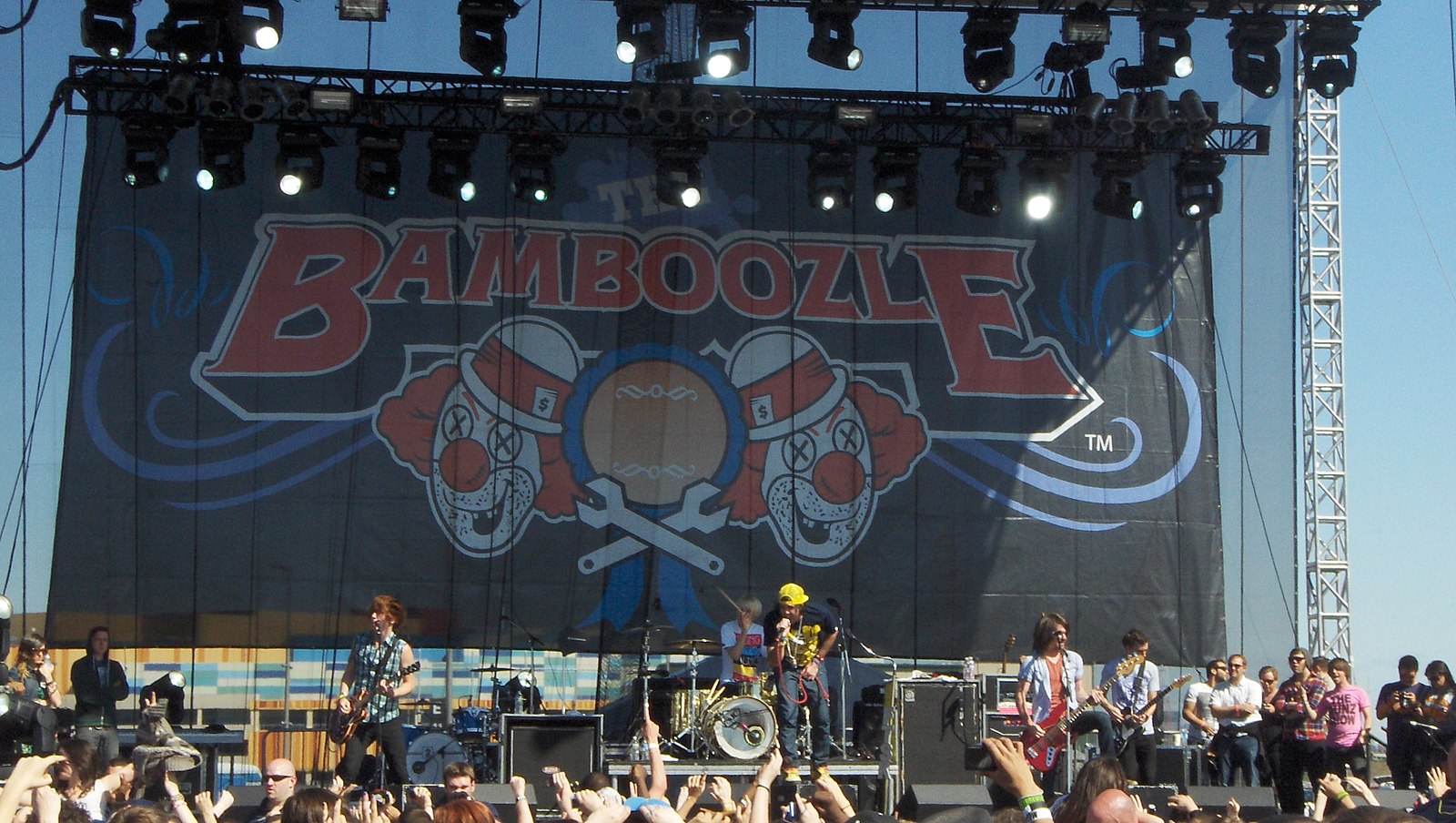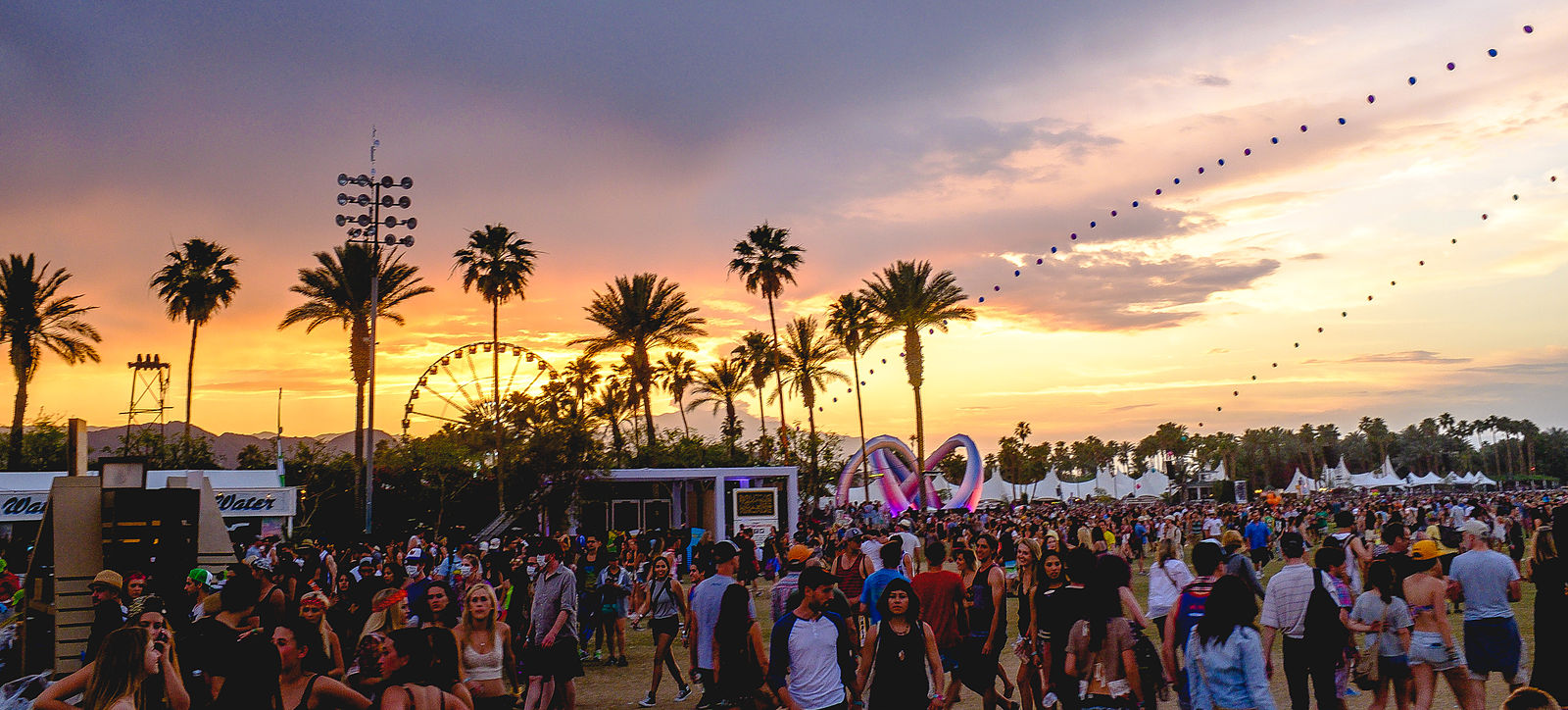
When the Bamboozle Festival announced its lineup for 2023, after weeks of missed announcements and snipes at fans, the reaction was decidedly mixed. The fact that the festival had previously announced it wouldn’t be blowing big bucks on massive headliners, and that the group of bands as a whole would be the draw — that wasn’t the problem. The lineup is fine (see below).
But the fact that three-day general admission tickets will take over 350 of your hard-earned $$$ has raised some eyebrows. VIP and MVIP tickets reach far north of that. Not having mega-headliners because you want to keep costs down is one thing, but $350 minimum for a festival headlined by the likes of Limp fuckin’ Bizkit, Papa Roach, and Steve Aoki — that seems steep.
It’s further evidence that bigger shows are moving further out of the reach of regular concert-goers and into the mitts of the ruling classes. A three-day weekend ticket for Coachella is $550. Bonnaroo is better at $340 for four days, but that’s still a huge amount of money for most people.
Forget festivals for a moment; attend a show at an arena and it can often stretch up to close to $100, before parking and concessions and so on. Unless they stick to $10 bar shows, how are regular people supposed to attend concerts anymore?

A popular narrative right now is that people are no longer paying for recorded music, so bands make up their money and fill that “shortfall” by touring. It used to be that bands would use the tour as a loss leader, to promote the new record. Sales of said album would provide the income. That’s been reversed by the streaming age.
It’s also important to point out that we’re just coming out of a global pandemic — some say we’re still in it. Musicians and promoters lost a lot of money for a couple of years when touring and festivals were locked down completely or at least partially. The punters are taking the brunt of that pain now.
But still, the ballooning prices were happening way before COVID. The Fader reported that ticket prices had increased at a rate far greater than inflation: 20% between 2010 and 2015.
“According to trade publication Pollstar’s end-of-year report in 2015, the price of tickets to live music hit an all-time high that year, with an average cost of $74.25. This decreased by 2% in the first half of 2016, but tickets for Drake, Adele, Rihanna, Beyoncé, and Lady Gaga still appeared on sale for hundreds, sometimes thousands of dollars.”
There are a number of common factors that go beyond the declining recording industry. Production values are higher than ever, with artists such as Beyoncé and Taylor Swift putting on increasingly lavish and expensive shows.
“If Taylor Swift’s $200 million-plus grossing tour sounds impressive, and cause for the artist to provide the fans she appreciates with a break in the ticket price, it’s important to note that gross and net revenue are altogether different,” wrote Carrie Whitney for howstuffworks.com. “The cost of putting on a show, from stage production to backup dancers to indoor pyrotechnics and even holograms, has skyrocketed along with the price of concert tickets.”
Jeff Poirier, general manager of theater and music for Stubhub, told this writer that certain big league artists are getting more comfortable raising their ticket prices to capture more of the available upside while trying to balance not alienating their fans.
“One of the ways that they’re doing that, for instance, is with Ticketmaster’s product Platinum Listings, where it will take the premium rows in any given section — which used to just be on the floor or in the lower bowl — take those first couple of rows and release tickets at a certain price, monitor what they’re starting to sell for in the secondary market, release another tranche to what the secondary market or true market value is, and capture more upside that way,” he says. “Now, in some ways what they do is they use that to offset lower ticket prices in the upper parts of any given venue so that, although a wider range of ticket prices, you are able to offset the lower ticket prices with the higher ticket prices to make sure you get all the different price points for your fans that you can get — you’re capturing more upside overall. So we see the use of platinum listings go up over time, but even in general, and you’ll hear this from industry readers, they do fear that ticket prices just continue to go up and up and up over time. I think some of that is realizing that artists are making more and more on tours, and they realize the value of going on tour and they want to maximize what they get for their efforts.”
Stubhub, meanwhile, is attempting to evolve with the secondary market, which is to say that the lines between primary and secondary are blurring. The seedy perception of the “scalper” is giving way to something more respectable.
“I think if you look roughly 20 years ago when Stubhub was founded, there was a lack of understanding about how much access there actually was for people to go to live events,” Poirier said. “If you got on the phone to Ticketmaster and tried to get a ticket, and it sold out, it was very hard to understand how you were going to find a ticket, and honestly many people didn’t feel like going and standing on street corners to get what could be a fraudulent ticket. It was a pretty big ask of people to go to live events. Fast forward to today, and you’ve got robust ticket marketplaces that are offering up a seamless way to find the event they want to go to, pay in a safe manner since they’ve found the ticket that they want, and make sure that they got the ticket and have some guarantees in place that they’ll get in the door. We’ve come a very long way.”
All of this might go some way to explaining why ticket prices are going up, but it doesn’t offer a solution. Because the truth is, the festivals are still selling out in double-quick time so there’s no incentive at all for prices to be lowered. They’ll simply continue to be playgrounds for the most privileged, and that’s a damn shame.


